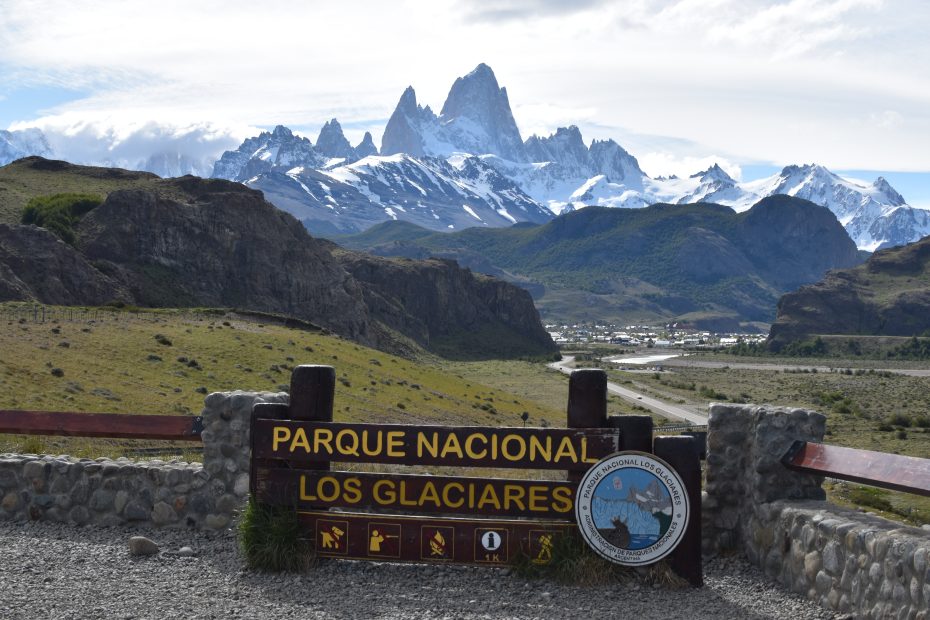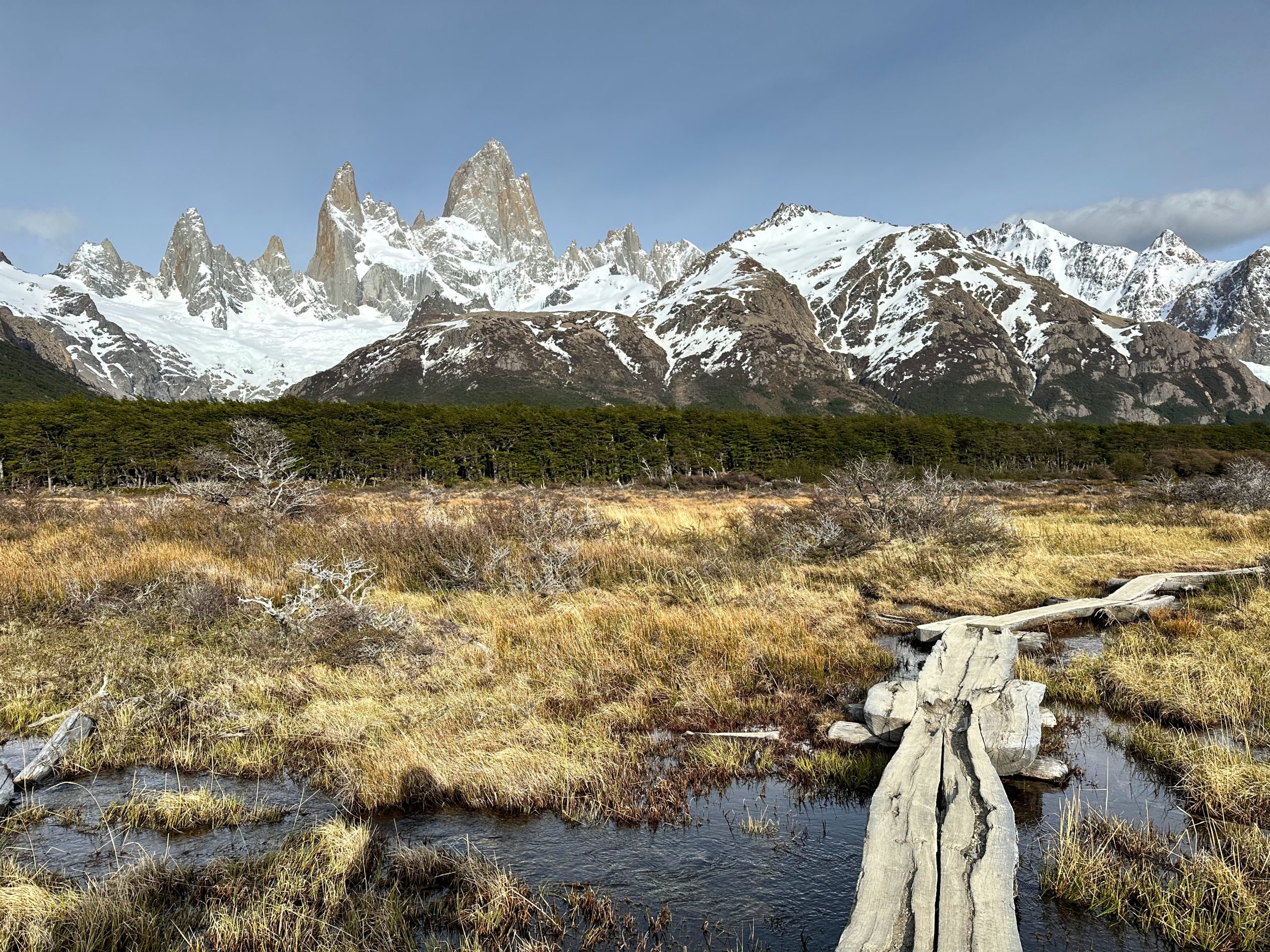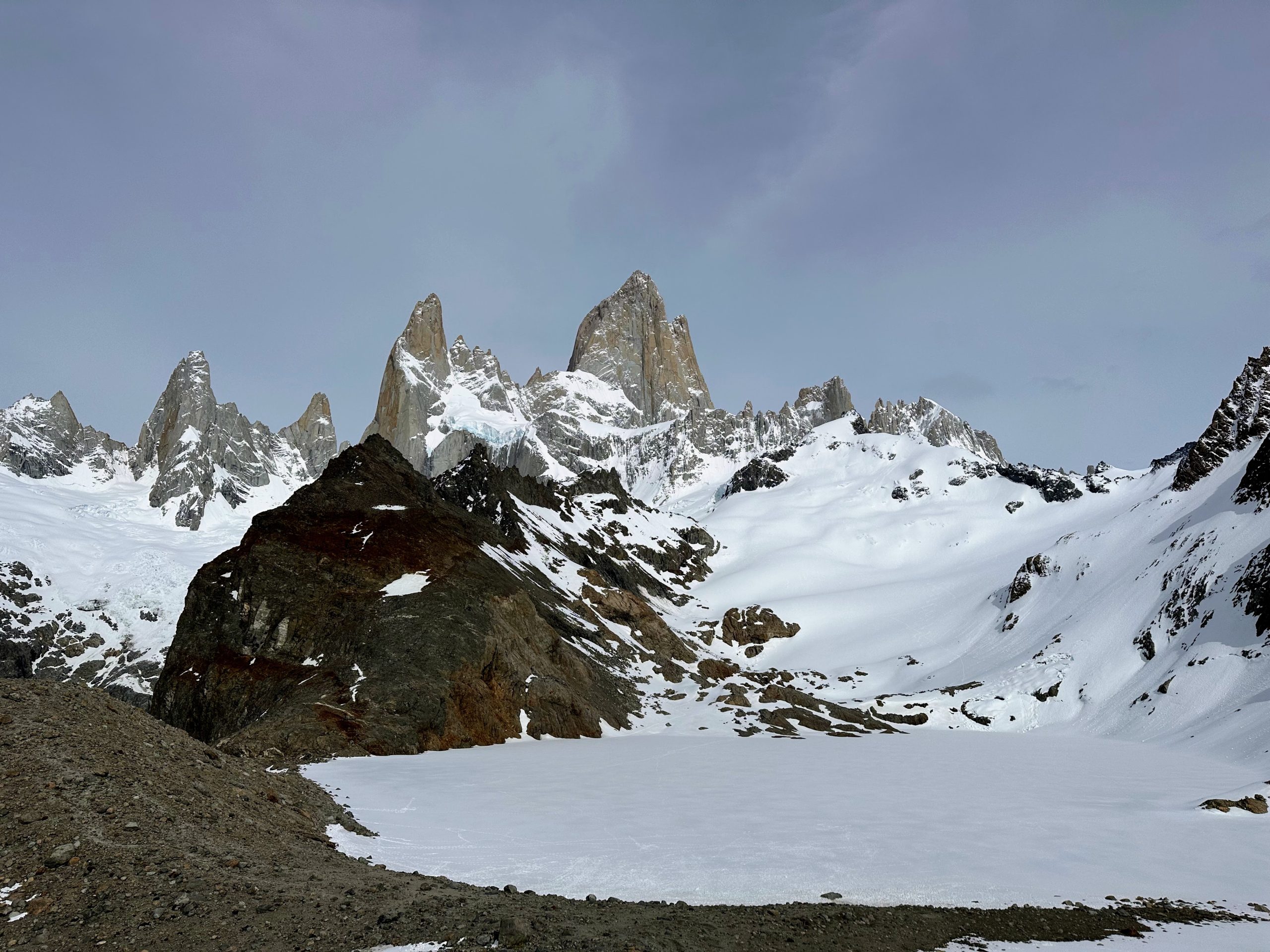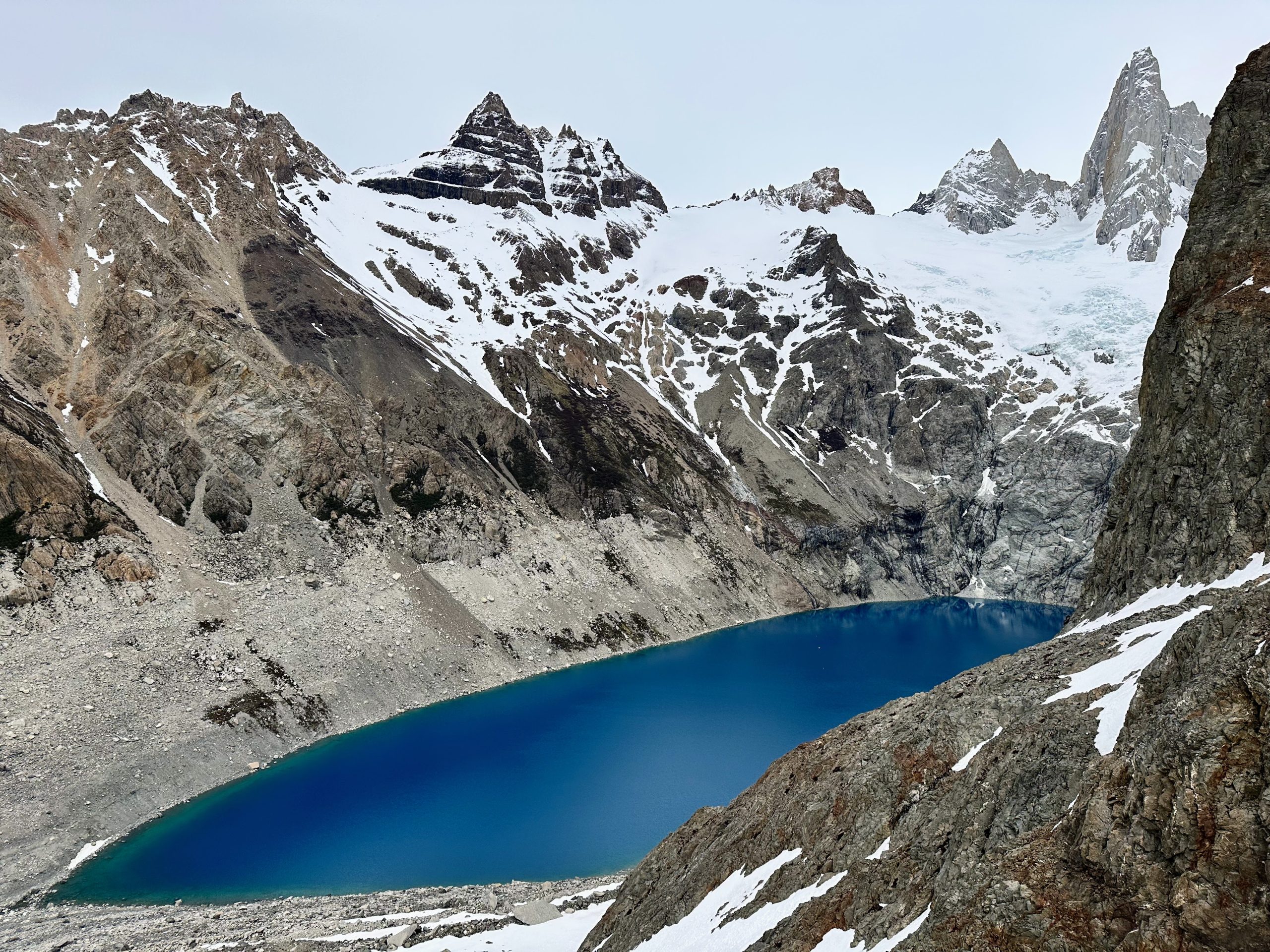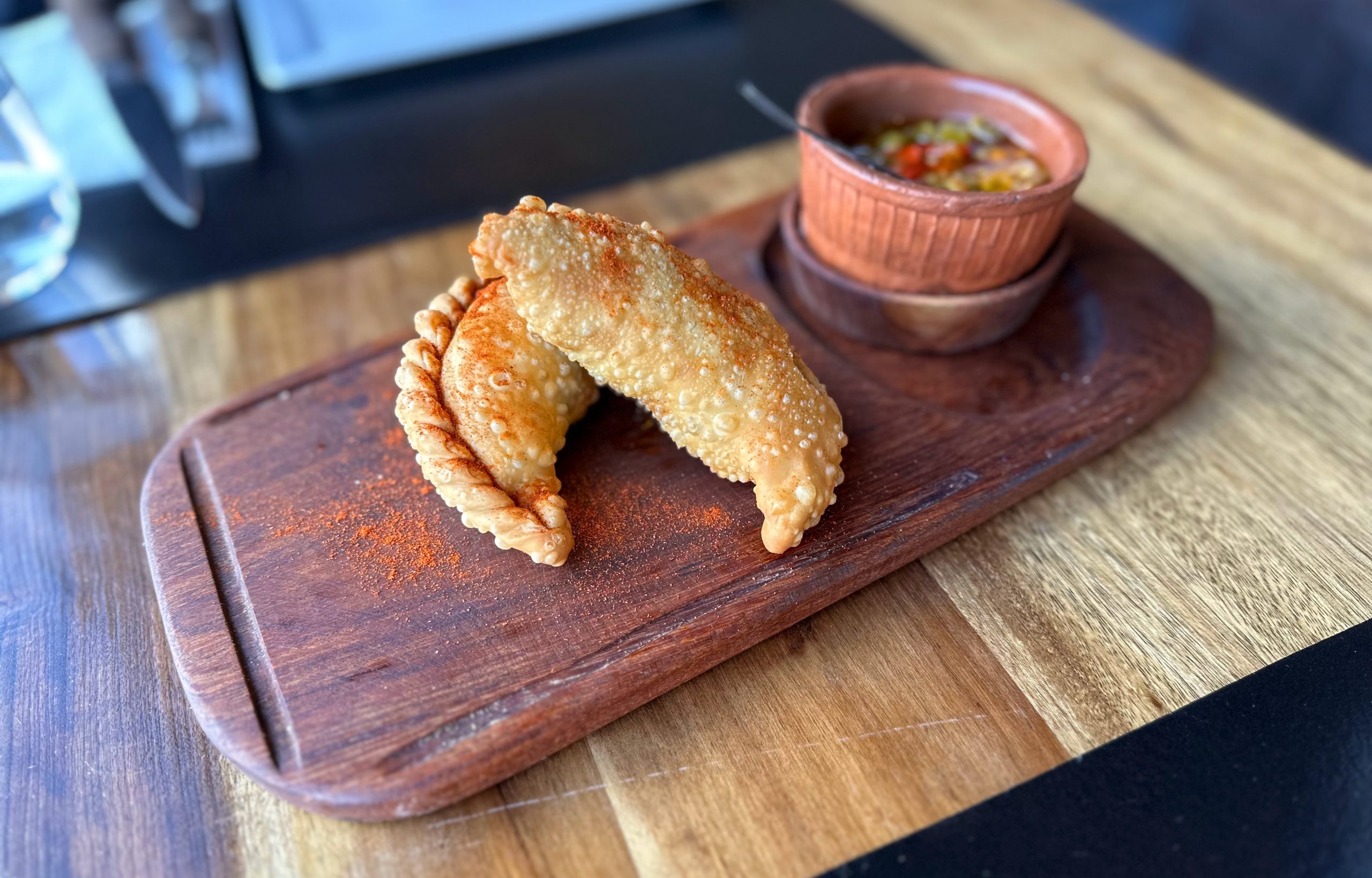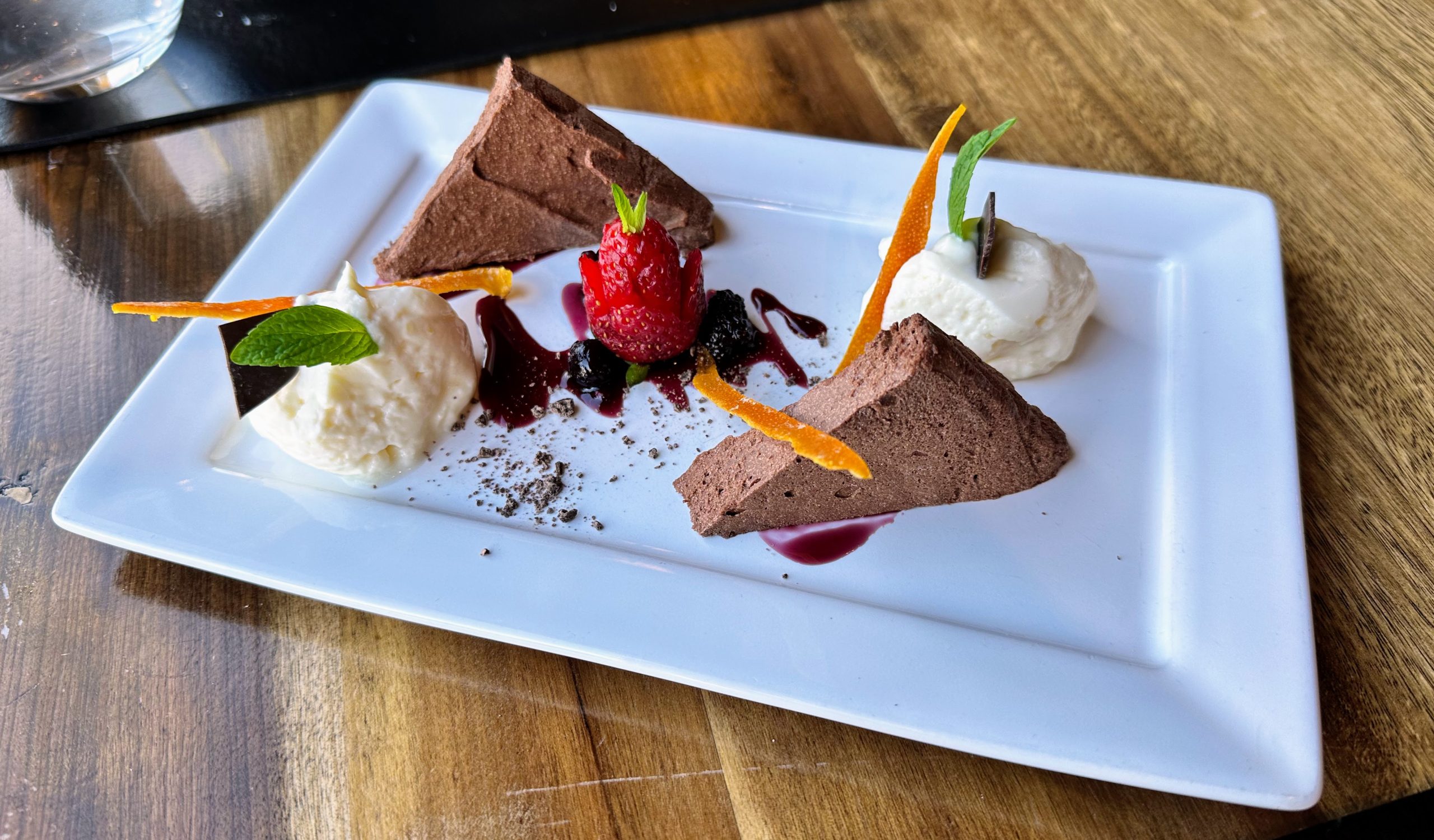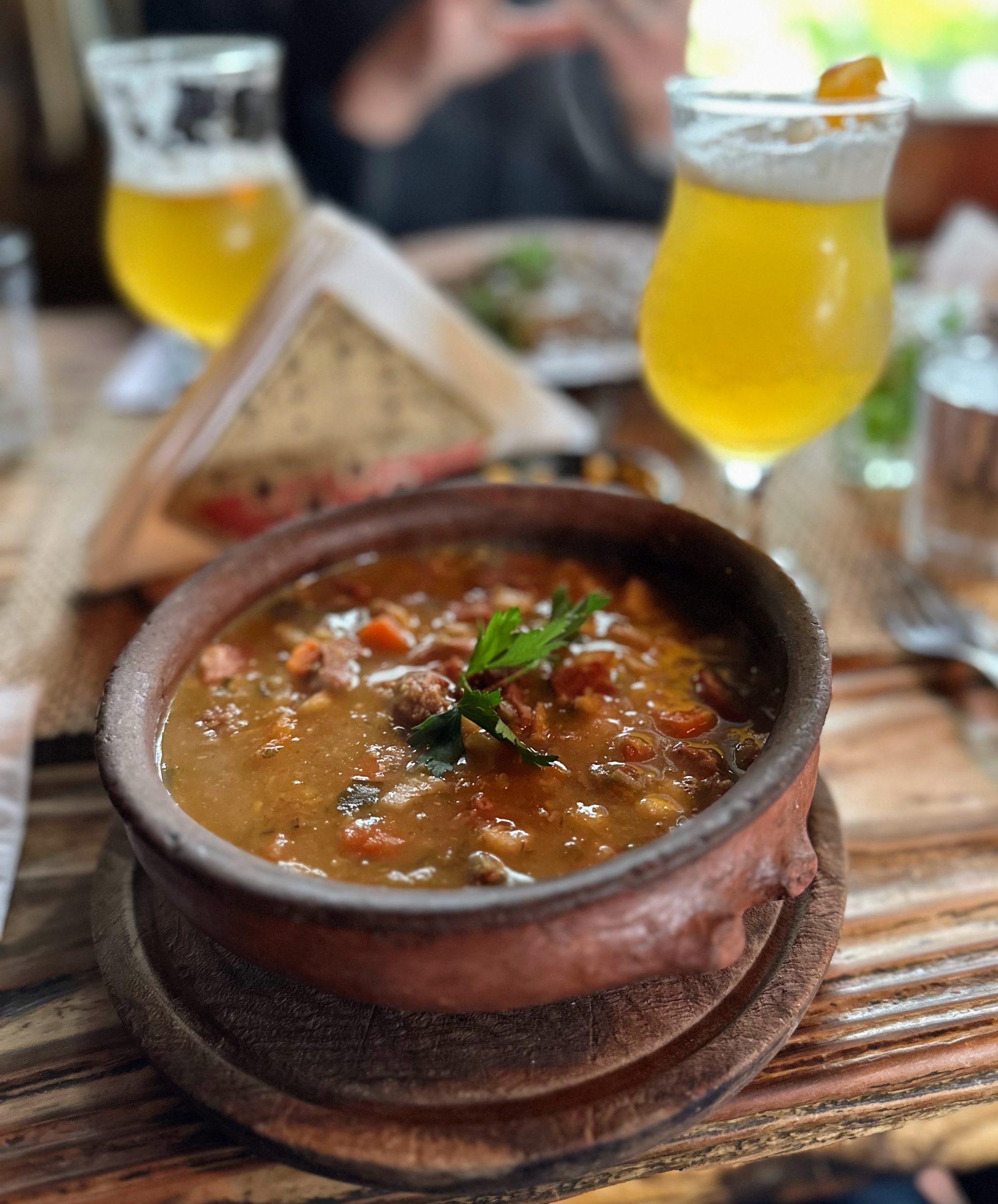During our trip to Patagonia, we spent five days exploring Los Glaciares. Without a doubt, it is one of the most awe-inspiring places we’ve visited. The mountain peaks and glaciers are so striking and dramatic – it’s hard to focus on where you’re walking because you want to keep looking up.
This national park is huge and spans a few major areas – most notably El Chaltén and El Calafate. We divided our time between these two towns so that we could explore everything the park has to offer.
El Chaltén
The national capital of trekking in Argentina – El Chaltén is stunning. The town itself is super charming, with quaint wooden buildings lining the main street, but the surrounding scenery is what sets El Chaltén apart. The town is directly at the base of the mountains – so much so that many people staying there walk to the start of the trails. We had a rental car so we saved ourselves the steps, but each of the below hikes is immediately accessible from town.
Hikes to Do
- Laguna de Los Tres (13.7 miles, 3,503 feet of elevation gain): The Fitz Roy hike. The one hike that everyone needs to brave in El Chaltén. Laguna de Los Tres is long and intense, but it is incredibly rewarding. Most of the hike is nice and gradually uphill, but the last hour or so is quite steep and rocky. Start this hike early in the day (before 7am) to avoid traffic jams on this last stretch. If the full hike seems daunting, there are some very nice viewpoints along the way that you can make the endpoint of a shorter hike (see: Laguna Capri). The views at the top though are absolutely worth the exercise. Even with the lake completely frozen over when we got there (an unseasonably cold late November), we still loved getting that close to Fitz Roy. The short detour past the lake to Mirador a la Laguna Sucia was also well worth it, as the water was a beautiful deep shade of blue.
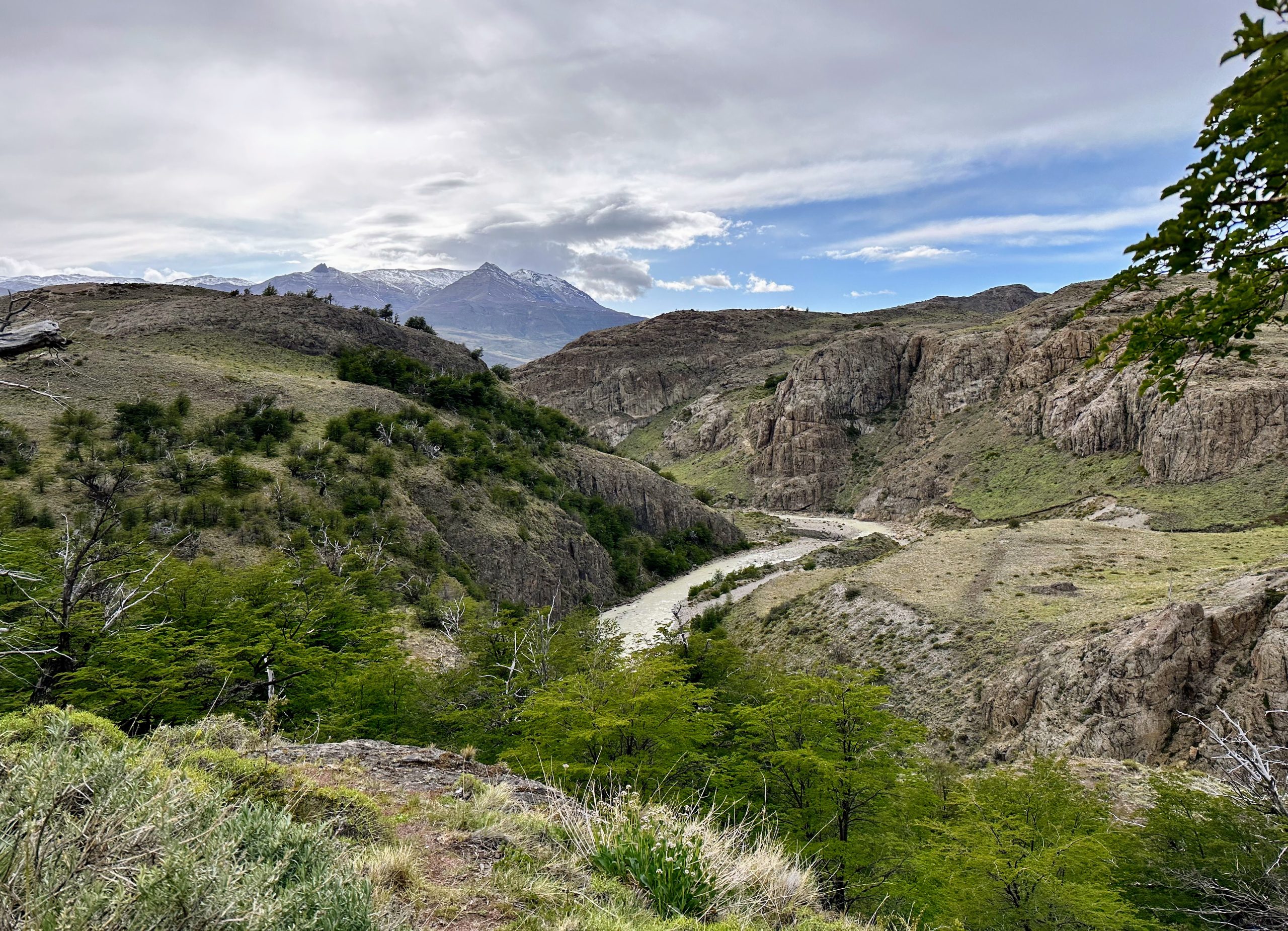
- Laguna Torre (10.9 miles, 1,643 feet of elevation gain): The runner-up hike after Laguna de Los Tres. We didn’t have as much luck with Laguna Torre unfortunately. The excessive cloud cover and overall nasty weather made it hard to appreciate the viewpoints, and we were already not feeling our best. With those factors working against us, we opted to turn around at Mirador Torre (a couple miles in). If weather permits though, this hike is supposed to be nice. Just check the forecast before you go (be mindful of the low cloud cover percentage).
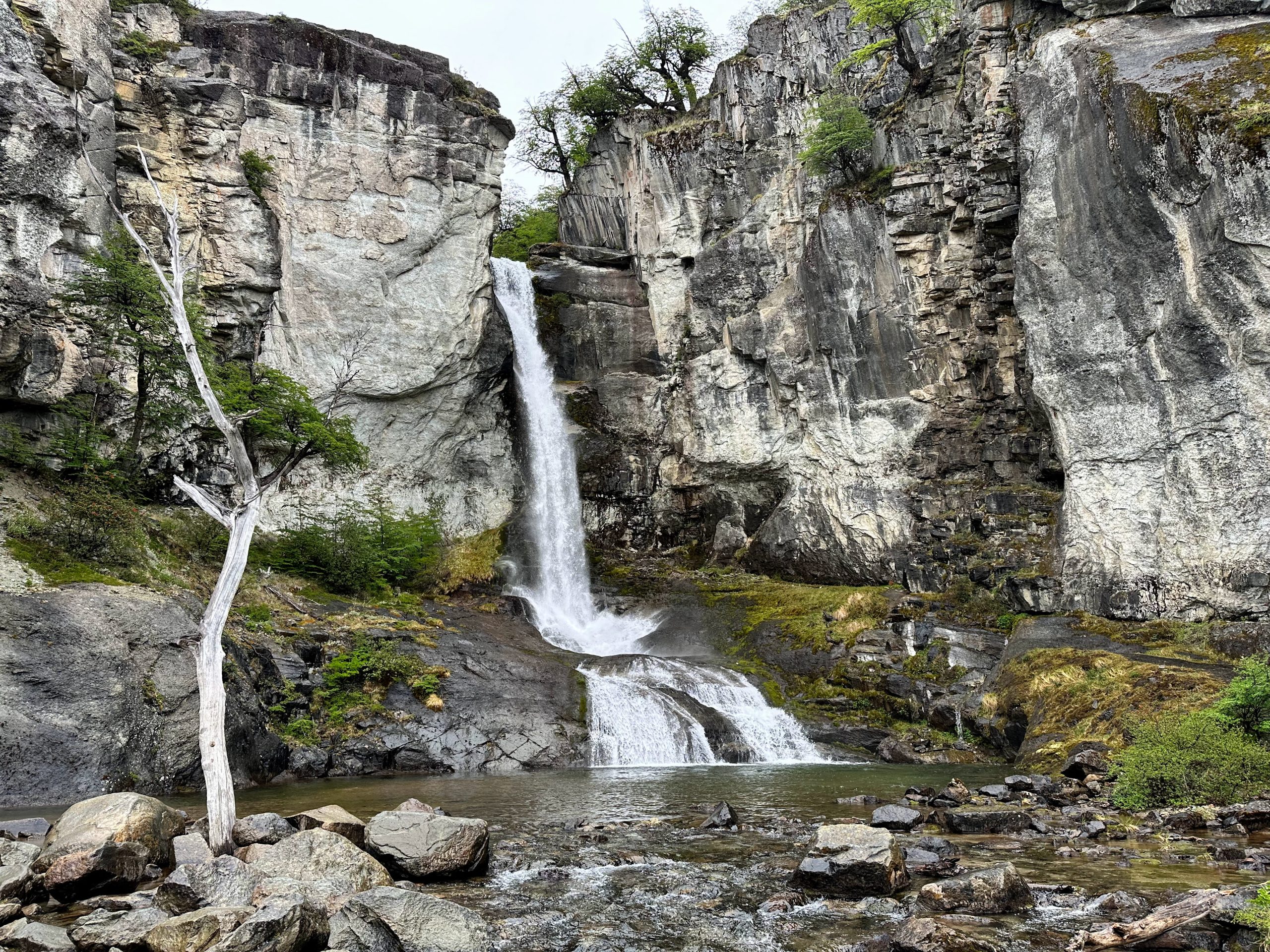
- Chorrillo del Salto (0.6 miles, essentially no elevation gain): More of a walk than a hike, this waterfall is well worth a visit. If you have a rental car, you can drive to a small parking area that is only a half mile from the base of the falls. Without a car though, you will need to hike from town, which is about 4 miles roundtrip. Because this hike is more family friendly, you can expect a decent crowd at the falls. It is a great photo spot, though.
Given the length of the first two hikes above, you will likely want to eat lunch on the trail. Luckily, there are a few grocery store options in town that will either sell pre-made / wrapped sandwiches (like SIMPLE) or the ingredients you need to make your own. The pre-made options are obviously more expensive, but we enjoyed the convenience and thought the sandwiches were a perfect on-the-go lunch. For dinner, there are a couple really good dining options in town that are fitting rewards after a strenuous hike.
Where to Eat
- The Asadores: Without a doubt, this was our favorite meal in Patagonia. The food and service were spectacular. Reservations are required, so do yourself a favor and reach out via the restaurant’s WhatsApp in advance. When we were there, The Asadores only offered a five-course prix fixe menu. For some of the courses you had a couple options to choose from, but the selections were admittedly limited. To start, we had the guanaco empanada (10 out of 10). It came with a spicy salsa that was perfect. After that, we had the sausage and melted cheese plate, which was also perfect. Even the blood sausage on the platter was amazing – and we don’t even like blood sausage usually. Our third course was a boring salad. Next, we had perfectly cooked ribeye steaks (you have to get steak in Argentina, it’s the best). And then for dessert, we had a chocolate mouse with lemon cream, which was also amazing. Just so much good stuff here. To top it all off, the entire dinner was only about $25 per person because of the exchange rate. It may have been the best bang for our buck dinner we’ve ever had, and we absolutely would have eaten here again if we had a third night in El Chaltén.
- La Cervecería Chaltén: The Asadores was a tough act to follow, but we really enjoyed our meal at La Cervecería too. Even though La Cervecería is a brewery, it is really more of a restaurant. They don’t take reservations and get very crowded, so you will likely need to line up about 30 minutes before they open. Once you get seated, though, you’re in for a great experience. The highlights for us were the beef empanada suave, vegetable soup, and apple crumble dessert (you HAVE to get the crumble if they have it). We also really liked their weissbier and definitely did not complain about the free popcorn they kept refilling at the table.
Lodging in El Chaltén can be expensive, especially during high season, but luckily there are plenty of options. Location will be key if you don’t have a car. In that scenario, make sure you are central to the trailheads and dining options. If you do have a car, you can branch out a bit further, but we still recommend staying as central as possible. We really liked our Airbnb on Leonel Terray and would stay there again.
El Calafate and Perito Moreno Glacier
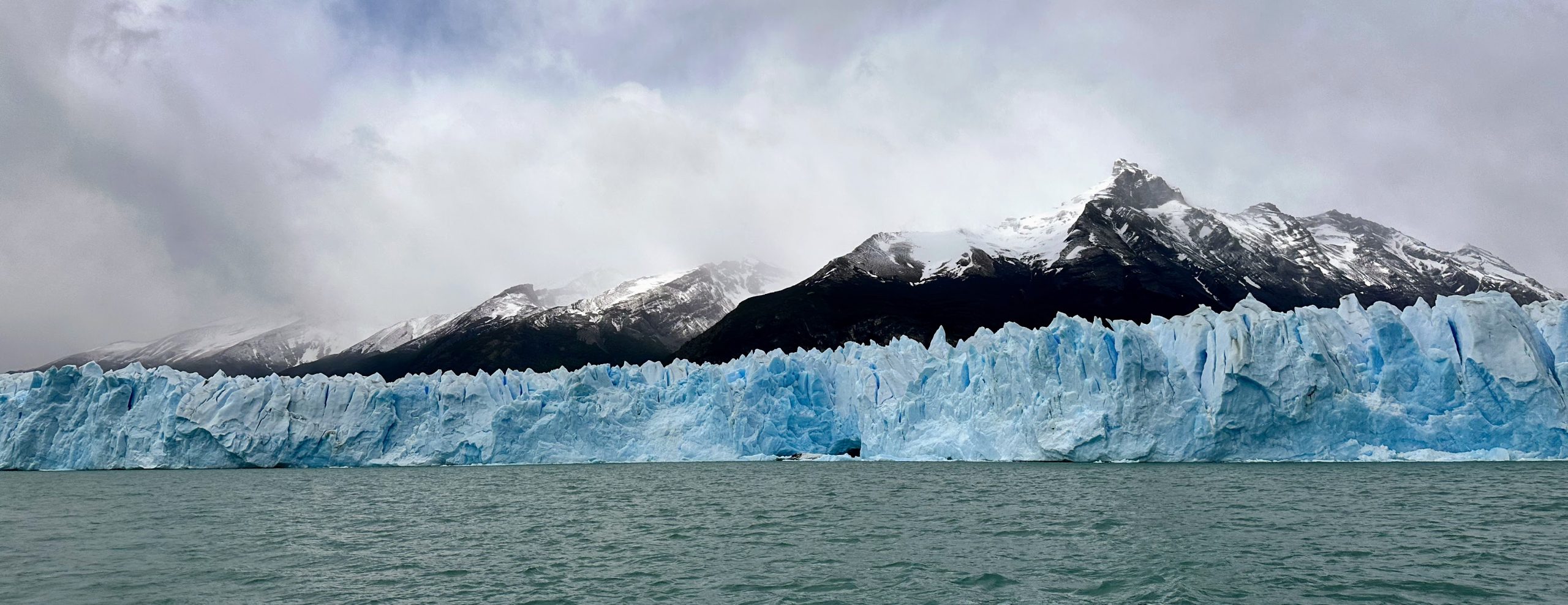
While El Calafate may not have as many attractions as El Chaltén, it does have one major draw: Perito Moreno Glacier. The glacier is about 1.5 hours from El Calafate, and it is seriously imposing. Every other glacier we had seen in Patagonia to this point paled in comparison. With a modest entrance fee of $10,000 ARS (~$12 in November 2023), it is well worth the trip. The best way to see Perito Moreno is to take a day trip from El Calafate (plan to get there when the gate opens at 8:00 AM to beat the tour bus traffic); below are the main things to do when you make it to the glacier.
Things to Do at Perito Moreno Glacier
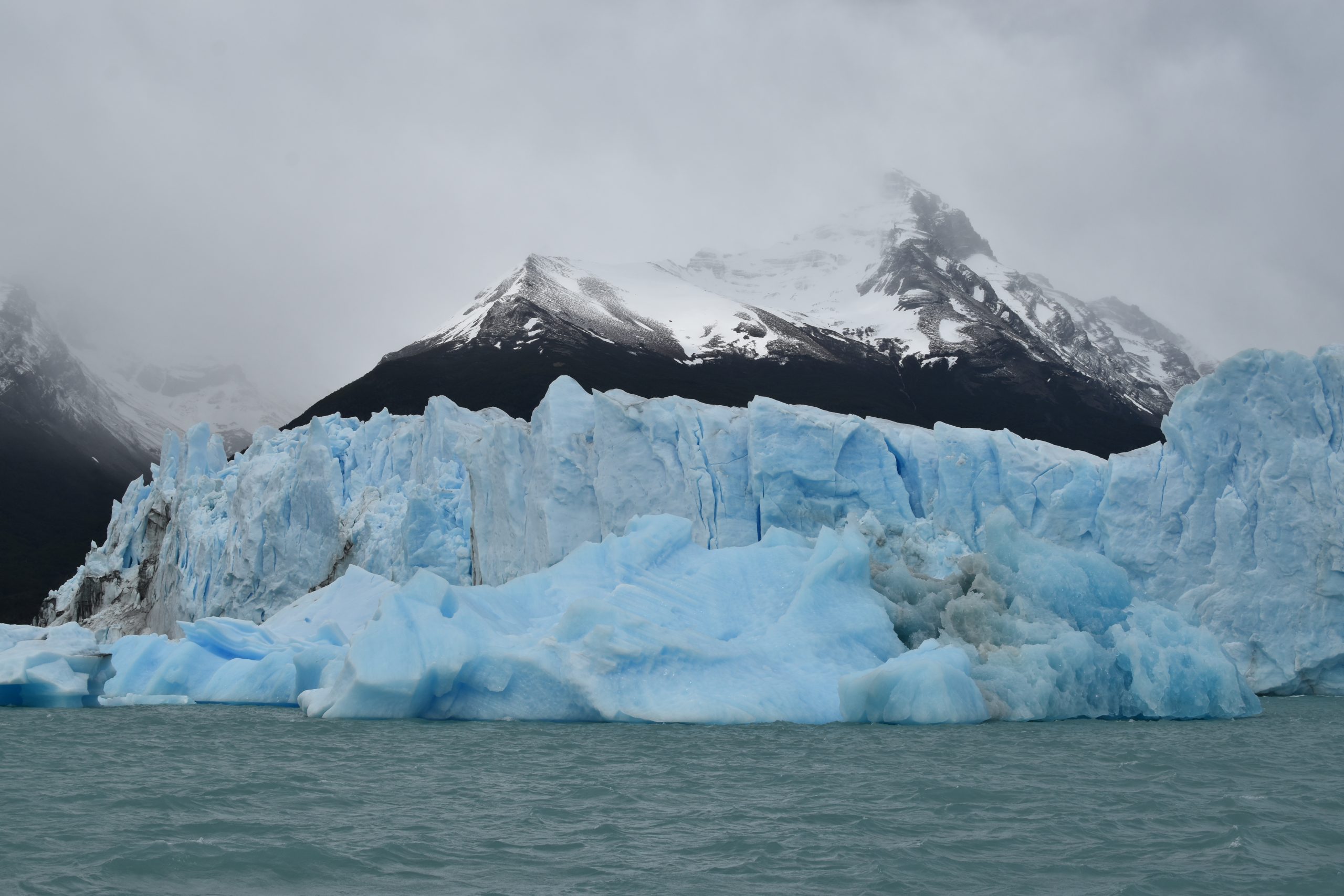
- Boat Tour: For a unique perspective of Perito Moreno, we recommend joining a boat tour that will take you right up to the glacier’s face. While you have the option to buy tickets in advance, you can save a few bucks by purchasing your tickets from the booth at the lower parking level (note that this booth opens 1-2 hours after the park entrance gates). Once on the boat, it is a short ride to the glacier’s face, then you’ll have a solid half hour to take photos. The tour company also has a professional photographer on board in case you’d like to pay for a higher quality picture.

- Walking Trails: If you’re on a budget and only want to pay for the entrance fee, there are plenty of walking trails around the glacier that offer a variety of views. Depending on your pace, you can easily do the full circuit of trails in 2-3 hours. Some are longer or more challenging than others, so take a look at the map when you get there to pick the trails that are right for you. As you are walking along these paths, keep your eyes on the glacier. If you’re lucky, you may get the see the glacier calving, but at the very least you should hear the large cracking sounds.
- Ice Trekking: For a truly unique (and expensive) experience, you can opt to hike on the glacier. We did not go ice trekking at Perito Moreno because of the cost and time required, but having gone ice climbing / hiking elsewhere – it is really cool. Any trekking tour should also include a short boat ride, so you may be able to cross off two activities at once.
Outside of Perito Moreno, there isn’t much to do in El Calafate apart from a few breweries and a local shopping area. We did find a couple good food options there though over the course of our two nights.
Where to Eat
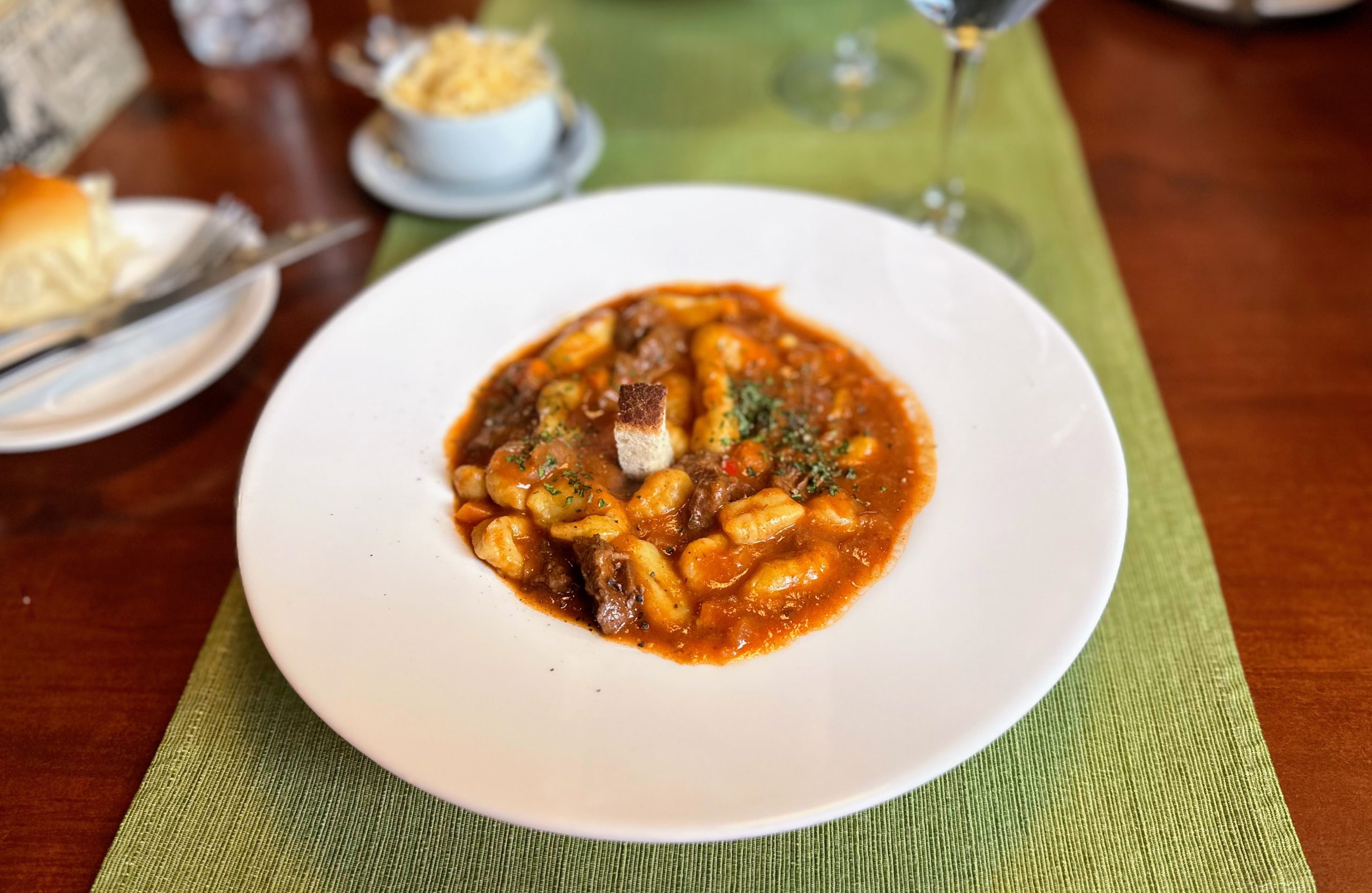
- Morrison Restaurant: We weren’t expecting much from Morrison, as it was relatively empty and had an interesting western decor, but the food was really good! And really reasonably priced! The goulash with gnocchi was delicious, as was the lamb empanada.
- La Herradura “Almacén de Fiambres”, Deli: While not a restaurant, this deli was perfect in preparation for our Perito Moreno visit. We got some fresh sliced prosciutto and baked bread to make sandwiches for our day trip, and it was delicious. Speaking some Spanish here is necessary though, as it is not a tourist spot.
In El Calafate we stayed at Hosteria Puerto San Julian. It was nice enough and had a good breakfast, but we would probably opt for a nicer Airbnb next time. We did enjoy the location, though, as it was central between the town’s main strip and the bus station.
Other Tips & Tricks

- Getting Around: It is very helpful to have a car in Patagonia. That said, you can get around by bus if needed. Tickets between El Calafate and El Chaltén are affordable; the main downside is that the bus takes longer than the two hour drive. The other main downside is you won’t be able to stop for photos of some of the bluest water you’ll ever see. Within each town, having a car is again helpful but not necessary. In El Chaltén you can walk everywhere, and in El Calafate you can walk to the main points of interest as long as you stay in a central location. In that scenario you would just need to book a tour to Perito Moreno Glacier.
- Crossing the Border: Chilean Patagonia is absolutely worth visiting. We found renting a car that could cross the border difficult, though. If you are able to find a company and itinerary that work, we definitely recommend renting a car instead of taking the bus. While the buses between Puerto Natales and El Calafate were comfortable enough and pretty cheap, they were very slow. For whatever reason we had to take a long detour on each leg of the return journey, and customs took a long time with the bus crowd. Meanwhile, we saw car drivers walk in and out of border control in no time. If you do end up needing to bus it like we did (Bus-Sur is the main company), make sure you: 1) book your tickets in advance, 2) allow for buffer when planning connecting trips, and 3) download plenty of movies to keep you entertained during the inevitable delays.
- Exchange Rates: Exchange rates between the dollar and Argentine peso can vary wildly. When we were there, the dollar went a long way (see: the price of our meal at The Asadores). Sometimes restaurants will give you an even more favorable rate if you pay in dollars instead of pesos. Do yourself a favor and keep cash for both currencies on hand so you can adapt as needed to find the best prices. Also check with your credit card company to confirm what rate they are using, as it can sometimes differ from the official rate.
- Language Barrier: The more touristy businesses in Patagonia generally speak English, but you’re bound to encounter a few local vendors that only speak Spanish. It helps if you know the basics for buying groceries, getting gas, etc. Google Translate can help here if needed.
- Weather: You can encounter all four seasons in a day in Patagonia. Pack wisely with versatile layers that can adapt to the changing conditions, and keep rain gear with you regardless of what the forecast says.
Happy traveling!
Kitrina & Jordan

